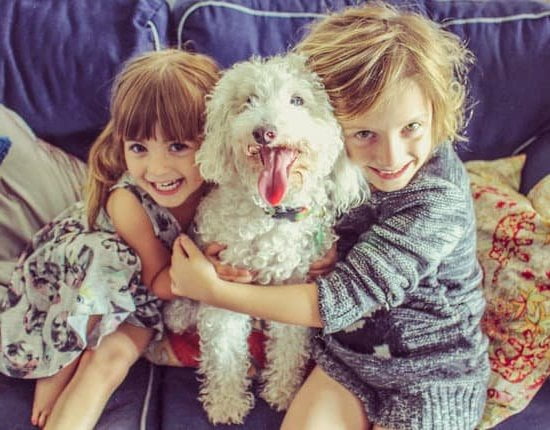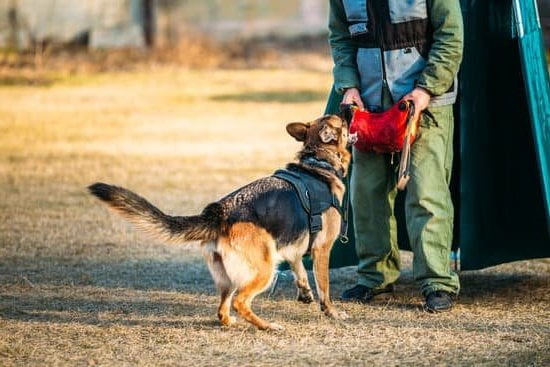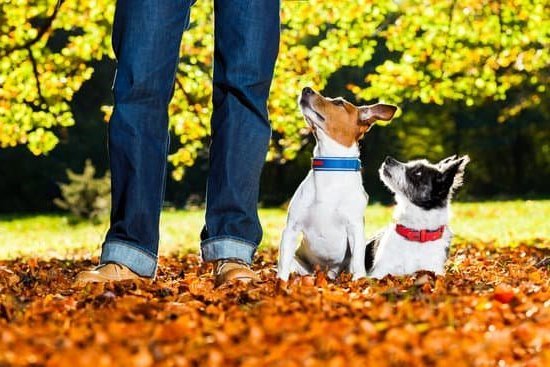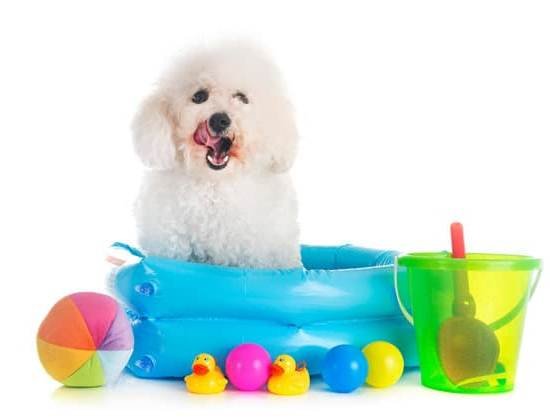Labrador Retrievers, often referred to as simply “Labs,” are known for their friendly and outgoing nature. In this article, we will delve into the world of house training these lovable and energetic dogs. From understanding the characteristics of Labradors to addressing specific house training techniques, we will provide you with comprehensive guidance on how to successfully house train your Labrador.
Labradors are a popular breed due to their intelligence, loyalty, and adaptable nature. However, without proper house training, their energy and playful demeanor can lead to undesirable behaviors in the home. Understanding the unique traits of Labradors and knowing why proper house training is crucial for this breed will set the foundation for successful training.
Before diving into specific house training techniques, it is essential to prepare for the process. This includes acquiring necessary supplies for house training such as a crate and cleaning products, as well as creating a designated potty area for your Labrador. Setting up your home environment for successful house training will ultimately contribute to a smoother and more effective training process.
Consistency is key when it comes to house training any dog breed, particularly Labradors. Establishing a routine for feeding and potty breaks while using positive reinforcement to encourage good behavior will help your Labrador understand what is expected of them. By maintaining consistency throughout the entire training process, you can effectively communicate expectations and facilitate quicker learning for your Labrador.
Preparing for House Training
Before starting the house training process, it is essential to prepare your home and gather the necessary supplies. For Labrador Retrievers, in particular, having the right equipment and setting up a designated potty area can greatly contribute to a successful house training experience. Some essential supplies for house training include a sturdy leash, poop bags, enzymatic cleaner for accidents, and of course, lots of patience.
Creating a designated potty area outdoors is also crucial in preparing for house training. Labradors are known for their high energy levels and need plenty of exercise throughout the day. Designating an area in your yard where your Lab can go to relieve themselves helps establish consistency and routine, making it easier for them to understand where they are supposed to go potty.
Aside from supplies and a designated potty area, it is also important to mentally prepare yourself for the task ahead. House training requires time, effort, and consistency. Understanding that accidents will happen and being patient throughout the process will be key in successfully house training your Labrador.
| Essential Supplies | Preparation Tips |
|---|---|
| Sturdy leash | Set aside time in your schedule for regular potty breaks |
| Poop bags | Create a consistent feeding schedule |
| Enzymatic cleaner | Stay patient and maintain a positive attitude throughout the process |
The Importance of Consistency
Establishing a Routine for Feeding and Potty Breaks
Consistency is key when it comes to house training a Labrador. One of the most important aspects of consistency is establishing a routine for feeding and potty breaks. Labradors thrive on routine, so it’s important to feed them at the same times each day and take them outside for potty breaks at regular intervals. This will not only help prevent accidents in the house but also teach your Labrador when and where they are supposed to relieve themselves.
Using Positive Reinforcement to Encourage Good Behavior
Consistency in using positive reinforcement is also crucial when house training a Lab. Whenever your Labrador successfully goes potty outside, be sure to praise and reward them with treats or enthusiastic praise. This positive reinforcement will help your Lab associate going potty outside with good behavior, making them more likely to continue doing so in the future.
Training Through Patience and Persistence
It’s essential to understand that consistent house training takes time, patience, and persistence. Your Labrador may have accidents in the house, but it’s important not to scold or punish them. Instead, continue being consistent with your routine and positive reinforcement, and eventually, your Lab will learn where they should go potty. Remember that every dog learns at their own pace, so patience and persistence are key components of successful house training.
Crate Training for House Training
Introducing a Labrador to crate training can be an important step in the house training process. It’s essential to remember that crates should be utilized as a positive and safe space for your dog, not as a form of punishment. Here are some key points to consider when implementing crate training for house training:
– **Introducing the crate to your Labrador**: When introducing the crate to your Lab, it’s important to make it a comfortable and inviting space. Place soft bedding inside and encourage your dog to explore the crate at their own pace. You can also use treats or toys to create a positive association with the crate.
– **Utilizing the crate for potty training and alone time**: The crate can be used as a tool for potty training by helping you control your Lab’s access to the house when they are not fully trained. Additionally, crates can assist in preventing destructive behavior when you are unable to supervise your dog. However, it’s crucial to avoid leaving your Lab in the crate for extended periods, as this can lead to anxiety and stress.
– **Establishing a routine for crate usage**: Consistency is key when it comes to using the crate for house training. Establish specific times for meals, potty breaks, and quiet time in the crate. This routine will help your Labrador understand when it’s appropriate to rest in their designated space and when they should be taken outside for bathroom breaks.
By implementing proper crate training techniques, you can make the house training process smoother and more successful for both you and your Labrador. Remember that patience and positive reinforcement play pivotal roles in helping your furry friend adjust to their new routine.
Potty Training Techniques
Labradors are known for their intelligence, friendliness, and high energy levels. When it comes to house training a Lab dog, understanding their characteristics is crucial. Labradors are eager to please and respond well to positive reinforcement.
Proper house training is important for Labs to ensure they grow into well-behaved and disciplined adult dogs. They are known for their loyalty and make excellent family pets, so investing the time in house training will benefit both the owner and the dog in the long run.
One of the key aspects of potty training techniques for Labradors is using verbal commands and hand signals effectively. Consistency is key when using these commands to help your Lab associate them with going potty in the designated area. Positive reinforcement through treats or praise will also go a long way in encouraging good behavior during potty breaks.
Supervised outdoor potty breaks are essential during the house training process. Taking your Lab outside frequently, especially after meals or naps, will help prevent accidents inside the house. It’s important to stay with your dog during these breaks to ensure they are going potty in the right spot. Cleaning up properly after accidents inside is also important to prevent re-marking in those areas.
| Labrador Characteristic | Importance of Potty Training |
|---|---|
| Eager to please and responds well to positive reinforcement | Ensures they grow into well-behaved adult dogs |
| Loyal and make excellent family pets |
Dealing With Accidents
House training a Labrador can be a challenging process, and accidents are bound to happen along the way. However, it’s important to handle these accidents properly in order to prevent re-marking and encourage successful house training.
Here are some key tips for dealing with accidents:
- Clean up accidents promptly and thoroughly. Use an enzymatic cleaner to completely remove the scent of urine or feces, as any remaining odor may signal to your Labrador that the area is an appropriate potty spot.
- Be patient and persistent. Accidents are a natural part of the house training process, so it’s essential to remain calm and consistent in your approach. Avoid punishing your Labrador for accidents, as this can lead to anxiety and fear.
- Adjust your house training techniques if necessary. If your Labrador continues to have frequent accidents despite your efforts, consider reassessing your approach and making any necessary changes to better suit your dog’s needs.
Understanding the role of accidents in house training is crucial for success. By maintaining a positive attitude and responding appropriately to accidents, you can help your Labrador learn proper potty habits in a supportive environment. Remember that every dog is different, so patience and perseverance are key components of the house training journey.
Addressing Challenges
Handling Separation Anxiety During House Training
One common challenge when house training a Lab dog is dealing with separation anxiety. Labrador Retrievers are known for their loyalty and attachment to their owners, which can lead to anxiety when left alone. This separation anxiety can manifest in destructive behavior, excessive barking, or even indoor accidents.
To address this challenge, it’s important to gradually acclimate your Labrador to being alone by starting with short periods of time and gradually increasing the duration of separation. Providing interactive toys and leaving comforting items with your dog can also help alleviate separation anxiety during house training.
The Impact of Age on House Training Success
Another challenge to consider when house training a Lab dog is the impact of age on the success of potty training. Young puppies have smaller bladders and shorter control over their bodily functions, which may result in more frequent accidents.
On the other hand, older dogs may have already developed certain bathroom habits that need to be unlearned. Understanding the different needs and capabilities of Labs at various ages can help in adjusting your approach to house training and being patient throughout the process.
Celebrating Success
Despite the challenges that come with house training a Lab dog, it’s important to celebrate every success along the way. Recognizing and rewarding successful potty training behavior reinforces positive habits and encourages your Labrador to continue exhibiting good behavior. Whether it’s through verbal praise, treats, or playtime, celebrating milestones in your Lab’s house training journey will strengthen your bond and make the process more enjoyable for both you and your loyal companion.
Celebrating Success
In conclusion, successfully house training a Labrador requires patience, consistency, and positive reinforcement. By understanding the characteristics of Labradors and the importance of proper house training, owners can prepare themselves for the task ahead. Preparing for house training with essential supplies and creating a designated potty area sets the stage for success.
Consistency is key when it comes to establishing a routine for feeding and potty breaks, as well as using positive reinforcement to encourage good behavior. Crate training can also be an effective tool for house training, providing a safe space for your Labrador and aiding in potty training.
Potty training techniques such as using verbal commands and hand signals, along with supervised outdoor potty breaks, are essential in teaching your Labrador where it is appropriate to relieve themselves. Dealing with accidents properly, addressing challenges such as separation anxiety, and understanding the impact of age on house training success are all part of the process.
Finally, celebrating success by recognizing and rewarding successful potty training behavior marks the transition from potty training to freedom in the house. With dedication and effort, any Labrador can be successfully house trained.
Frequently Asked Questions
Are Labradors Easy to Potty Train?
Labradors are generally easy to potty train, as they are intelligent and eager to please. Consistent training, positive reinforcement, and creating a routine for bathroom breaks can help in successfully potty training a Labrador.
Why Is My Lab Puppy Still Peeing in the House?
There could be several reasons why a lab puppy is still peeing in the house. It could be due to inadequate potty training, lack of consistent routine, medical issues such as urinary tract infections, or even anxiety. Identifying the cause is important in addressing this behavior effectively.
How Do You Train a Lab Dog at Home?
Training a lab dog at home involves consistency, positive reinforcement, and patience. Basic commands like sit, stay, come, and walking on the leash can be taught through short training sessions each day. Creating a structured routine with regular exercise and mental stimulation is also crucial for a well-behaved lab at home.

Welcome to the blog! I am a professional dog trainer and have been working with dogs for many years. In this blog, I will be discussing various topics related to dog training, including tips, tricks, and advice. I hope you find this information helpful and informative. Thanks for reading!





